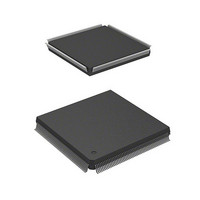HD6417750RF240DV Renesas Electronics America, HD6417750RF240DV Datasheet - Page 882

HD6417750RF240DV
Manufacturer Part Number
HD6417750RF240DV
Description
MPU 3V 16K I-TEMP,PB-FREE 208-QF
Manufacturer
Renesas Electronics America
Series
SuperH® SH7750r
Datasheet
1.D6417750RBP240DV.pdf
(1164 pages)
Specifications of HD6417750RF240DV
Core Processor
SH-4
Core Size
32-Bit
Speed
240MHz
Connectivity
EBI/EMI, FIFO, SCI, SmartCard
Peripherals
DMA, POR, WDT
Number Of I /o
28
Program Memory Type
ROMless
Ram Size
48K x 8
Voltage - Supply (vcc/vdd)
1.4 V ~ 1.6 V
Oscillator Type
External
Operating Temperature
-40°C ~ 85°C
Package / Case
208-QFP
Lead Free Status / RoHS Status
Lead free / RoHS Compliant
Eeprom Size
-
Program Memory Size
-
Data Converters
-
Available stocks
Company
Part Number
Manufacturer
Quantity
Price
Company:
Part Number:
HD6417750RF240DV
Manufacturer:
HITACHI
Quantity:
7 287
- Current page: 882 of 1164
- Download datasheet (7Mb)
Section 17 Smart Card Interface
Interrupt Operation: There are three interrupt sources in smart card interface mode, generating
transmit-data-empty interrupt (TXI) requests, transmit/receive-error interrupt (ERI) requests, and
receive-data-full interrupt (RXI) requests. The transmit-end interrupt (TEI) request cannot be used
in this mode.
When the TEND flag in SCSSR1 is set to 1, a TXI interrupt request is generated.
When the RDRF flag in SCSSR1 is set to 1, an RXI interrupt request is generated.
When any of flags ORER, PER, and FER/ERS in SCSSR1 is set to 1, an ERI interrupt request is
generated. The relationship between the operating states and interrupt sources is shown in table
17.9.
Table 17.9 Smart Card Mode Operating States and Interrupt Sources
Operating State
Transmit mode
Receive mode
Data Transfer Operation by DMAC: In smart card mode, as with the normal SCI, transfer can
be carried out using the DMAC. In a transmit operation, when the TEND flag in SCSSR1 is set to
1, a TXI interrupt is requested. If the TXI request is designated beforehand as a DMAC activation
source, the DMAC will be activated by the TXI request, and transfer of the transmit data will be
carried out. The TEND flag is automatically cleared to 0 when data transfer is performed by the
DMAC. In the event of an error, the SCI retransmits the same data automatically. The TEND flag
remains cleared to 0 during this time, and the DMAC is not activated. Thus, the number of bytes
specified by the SCI and DMAC are transmitted automatically, including retransmission following
an error. However, the ERS flag is not cleared automatically when an error occurs, and therefore
the RIE bit should be set to 1 beforehand so that an ERI request will be generated in the event of
an error, and the ERS flag will be cleared.
In a receive operation, an RXI interrupt request is generated when the RDRF flag in SCSSR1 is
set to 1. If the RXI request is designated beforehand as a DMAC activation source, the DMAC
will be activated by the RXI request, and transfer of the receive data will be carried out. The
RDRF flag is cleared to 0 automatically when data transfer is performed by the DMAC. If an error
occurs, an error flag is set but the RDRF flag is not. The DMAC is not activated, but instead, an
ERI interrupt request is sent to the CPU. The error flag must therefore be cleared.
Rev.7.00 Oct. 10, 2008 Page 796 of 1074
REJ09B0366-0700
Normal operation
Error
Error
Normal operation
Flag
TEND
FER/ERS
RDRF
PER, ORER
Mask Bit
TIE
RIE
RIE
RIE
Interrupt Source
TXI
ERI
RXI
ERI
Related parts for HD6417750RF240DV
Image
Part Number
Description
Manufacturer
Datasheet
Request
R

Part Number:
Description:
KIT STARTER FOR M16C/29
Manufacturer:
Renesas Electronics America
Datasheet:

Part Number:
Description:
KIT STARTER FOR R8C/2D
Manufacturer:
Renesas Electronics America
Datasheet:

Part Number:
Description:
R0K33062P STARTER KIT
Manufacturer:
Renesas Electronics America
Datasheet:

Part Number:
Description:
KIT STARTER FOR R8C/23 E8A
Manufacturer:
Renesas Electronics America
Datasheet:

Part Number:
Description:
KIT STARTER FOR R8C/25
Manufacturer:
Renesas Electronics America
Datasheet:

Part Number:
Description:
KIT STARTER H8S2456 SHARPE DSPLY
Manufacturer:
Renesas Electronics America
Datasheet:

Part Number:
Description:
KIT STARTER FOR R8C38C
Manufacturer:
Renesas Electronics America
Datasheet:

Part Number:
Description:
KIT STARTER FOR R8C35C
Manufacturer:
Renesas Electronics America
Datasheet:

Part Number:
Description:
KIT STARTER FOR R8CL3AC+LCD APPS
Manufacturer:
Renesas Electronics America
Datasheet:

Part Number:
Description:
KIT STARTER FOR RX610
Manufacturer:
Renesas Electronics America
Datasheet:

Part Number:
Description:
KIT STARTER FOR R32C/118
Manufacturer:
Renesas Electronics America
Datasheet:

Part Number:
Description:
KIT DEV RSK-R8C/26-29
Manufacturer:
Renesas Electronics America
Datasheet:

Part Number:
Description:
KIT STARTER FOR SH7124
Manufacturer:
Renesas Electronics America
Datasheet:

Part Number:
Description:
KIT STARTER FOR H8SX/1622
Manufacturer:
Renesas Electronics America
Datasheet:

Part Number:
Description:
KIT DEV FOR SH7203
Manufacturer:
Renesas Electronics America
Datasheet:











